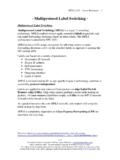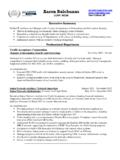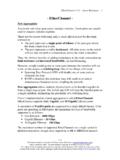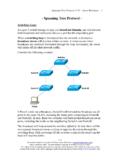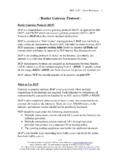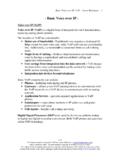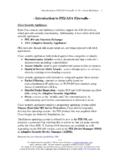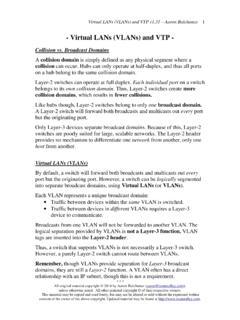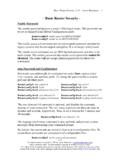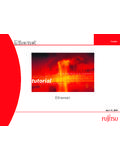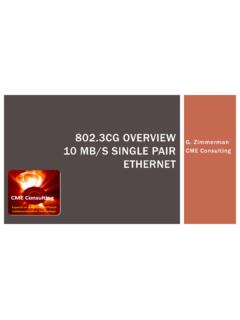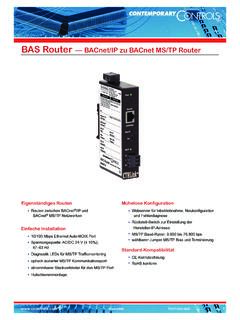Transcription of switch port configuration - Router Alley
1 switch Port configuration Aaron Balchunas * * * All original material copyright 2014 by Aaron Balchunas unless otherwise noted. All other material copyright of their respective owners. This material may be copied and used freely, but may not be altered or sold without the expressed written consent of the owner of the above copyright. Updated material may be found at 1 - switch Port configuration - Cisco Operating Systems Cisco offers two brands of network switches: Catalyst Cisco s flagship switching platform, with a large selection of models spanning access, distribution, and core layers. Nexus high-end switches focused at datacenter environments. Depending on the brand and model, Cisco supports one of three switch operating systems: Catalyst OS (CatOS) - interface based on set commands, that is almost entirely deprecated.
2 CatOS will not be covered in this guide. IOS interface that is nearly identical to the Cisco Router IOS, except for switching-specific commands. NX-OS interface supported exclusively on Nexus brand switches. The following details the supported operating system for various Cisco platforms: CatOS IOS NX-OS Catalyst 1200 Catalyst 2948 Catalyst 4000 Catalyst 4500 Catalyst 5000 Catalyst 5500 Catalyst 6000 Catalyst 6500 Catalyst 29xx Catalyst 35xx Catalyst 36xx Catalyst 37xx Catalyst 38xx Catalyst 4500 Catalyst 4900 Catalyst 6500 Catalyst 6800 Nexus 1000V Nexus 3000 Nexus 4000 Nexus 5000 Nexus 7000 Nexus 9000 The basic IOS interface is nearly identical between switches and routers, and is covered in great detail in other guides on this site: Introduction to the Cisco IOS Advanced IOS Functions This guide will focus on switch -specific IOS functions.
3 For a more comprehensive IOS review, consult the guides listed above. switch Port configuration Aaron Balchunas * * * All original material copyright 2014 by Aaron Balchunas unless otherwise noted. All other material copyright of their respective owners. This material may be copied and used freely, but may not be altered or sold without the expressed written consent of the owner of the above copyright. Updated material may be found at 2 switch Port configuration Traditionally, network connections on switches have been referred to as ports , while on routers they are referred to as interfaces. However, in the Cisco IOS, switch ports are referred to as interfaces as well. Additionally, most Cisco switches are modular.
4 Thus, configuration commands must reflect both the module and interface number, in the following format: module/interface Some catalyst switches support being stacked essentially, multiple physical switches connected together to form one logical switch . configuration commands must reflect the stack, module, and interface number, in the following format: stack/module/interface To enter interface configuration mode for the third Fast Ethernet interface off of the second module: switch (config)# interface FastEthernet 2/3 switch (config-if)# Note that most switches will number their modules and interfaces starting at 1, while most routers will number their modules/interfaces starting at 0. The above command can be shortened, as long as the truncated command is not ambiguous: switch (config)# interface fa 2/3 If the interface above was Gigabit Ethernet instead of Fast Ethernet: switch (config)# interface GigabitEthernet 2/3 switch (config)# interface gi 2/3 Note: On Nexus switches using the NX-OS, the speed of an Ethernet interface is not used to identify it all interfaces are simply Ethernet: NexusSwitch(config)# interface Ethernet 2/3 Multiple interfaces can be configured simultaneously: switch (config)# interface range gi2/3 , gi2/5 , gi2/7 switch (config-if-range)# The above command selects interfaces gi2/3, gi2/5, gi2/7.
5 Please note that there is a space on either side of each comma. switch Port configuration Aaron Balchunas * * * All original material copyright 2014 by Aaron Balchunas unless otherwise noted. All other material copyright of their respective owners. This material may be copied and used freely, but may not be altered or sold without the expressed written consent of the owner of the above copyright. Updated material may be found at 3 switch Port configuration (continued) A contiguous range of interfaces can be specified: switch (config)# interface range gi3/10 - 15 The above command selects interfaces gi3/10 through gi3/15. Please note the space on either side of the dash. Macros can be created for groups of interfaces that are configured often: switch (config)# define interface-range MACRONAME gi3/10 15 switch (config)# interface range macro MACRONAME switch (config-if-range)# The first command creates a macro (or group) of interfaces called MACRONAME.
6 The second command actually selects those interfaces for configuration . Descriptions can be applied to an interface for documentation purposes: switch (config)# interface gi3/10 switch (config-if)# description WEBSERVER Spaces are allowed in a description: switch (config)# interface gi2/10 switch (config-if)# description CHECK PRINTER IN PAYROLL Descriptions can greatly assist in troubleshooting issues, as long as they are accurate. Descriptions on access-layer switches can be difficult to manage, as hosts may change interfaces often. Scenarios where adding descriptions to interfaces is valuable: switch or Router uplinks WAN connections Datacenter hosts such as servers or firewalls Descriptions should be as detailed as possible.
7 For example, including the circuit number on a WAN connection can accelerate resolution of an outage. If an interface does not have an accurate description, there are two methods of determining what is connected to it: Trace the physical cable to the host (always fun) Leverage the CAM table to identify a host by its MAC address switch Port configuration Aaron Balchunas * * * All original material copyright 2014 by Aaron Balchunas unless otherwise noted. All other material copyright of their respective owners. This material may be copied and used freely, but may not be altered or sold without the expressed written consent of the owner of the above copyright. Updated material may be found at 4 switch Port configuration Speed and Duplex Some switch interfaces are fixed at a single speed.
8 Often though, a single switch interface can support multiple speeds. For example, a Gigabit Ethernet interface is often backwards-compatible with original and Fast Ethernet, and is referred to as a 10/100/1000 interface. To manually specify the speed of an interface: switch (config)# interface gi3/10 switch (config-if)# speed 10 switch (config-if)# speed 100 switch (config-if)# speed 1000 The duplex of an interface can be manually specified as well: switch (config)# interface gi3/10 switch (config-if)# duplex half switch (config-if)# duplex full Ethernet also has the ability to autonegotiate both the speed and duplex of an interface. Autonegotiation will attempt to use the fastest speed available, and will attempt to use full-duplex if both devices support it.
9 Only one command is required to force an interface to autonegotiate its speed and duplex: switch (config)# interface gi3/10 switch (config-if)# speed auto The configuration must be consistent on both sides of the connection. Both sides must be configured to autonegotiate, or both sides must be hardcoded with identical settings. Otherwise a duplex mismatch error can occur. For example, if a workstation s interface is configured to autonegotiate, and the switch interface is hardcoded for 100 Mbps and full-duplex, then a duplex mismatch will occur. The workstation s interface will sense the correct speed of 100 Mbps, but will not detect the correct duplex and will default to half-duplex. If the duplex is mismatched, collisions will occur.
10 Because the full-duplex side of the connection does not utilize CSMA/CD, performance is severely degraded. These issues can be difficult to troubleshoot, as the network connection will still function, but will be excruciatingly slow. switch Port configuration Aaron Balchunas * * * All original material copyright 2014 by Aaron Balchunas unless otherwise noted. All other material copyright of their respective owners. This material may be copied and used freely, but may not be altered or sold without the expressed written consent of the owner of the above copyright. Updated material may be found at 5 switch Port configuration Speed and Duplex (continued) When autonegotiation was first developed, manufacturers did not always adhere to the same standard.

